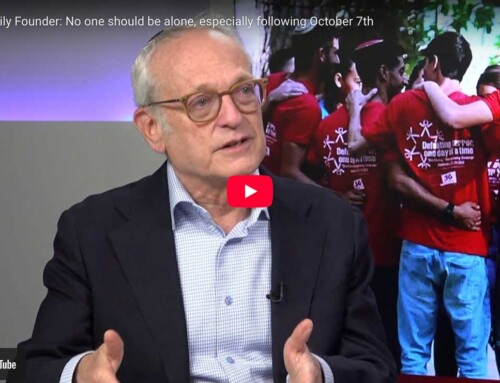Original Source: Article published in The Times of Israel – By Marc Belzberg (photo below) April 29, 2014

This “peace tactic” – which ultimately fizzled – reminded me of a similar circumstance that transpired just over 28 years ago.
On February 11, 1986, after 12 years in a Russian prison, Natan Sharansky was freed in a one of the most famous prisoner exchanges in modern Jewish history.
Numerous members of the U.S. Congress, the Senate, and even the President of the United States himself, had been petitioning Russia for years to release Sharansky, a Russian Jew who had been sentenced to death for teaching Hebrew and leading the movement that sought to open Russia’s Iron Curtain for Jewish emigration. Sharansky languished in a Siberian Gulag with almost no visitation rights and no hope for his release.
At that time, the Cold War raged on, and Russia was the most powerful enemy of the United States. They were not fond of Israel either.
Luckily, the United States had discovered and captured a high-ranking Czech Spy named Karl Koecher who had infiltrated the FBI. Koecher, who was detained at the airport during an attempt to flee the U.S., was convicted of espionage and sentenced to life in prison.
After serving only one year and four months of his life sentence, a deal was struck to exchange Koecher for Sharansky.
In the middle of a heavy snow storm, the Russian KGB stood with Sharansky at one end of the Glienicker Bridge in East Germany, and the Americans held their ground at the other end with Koecher. The prisoners were released simultaneously with strict instructions to walk across the bridge and pass each other silently.
As Sharansky reached the Potsdam side of the bridge, he was a free man. He chose to make his new life with the people of Israel, finally living out his Zionistic dreams.
As this well-known episode clearly illustrates, enemies exchange their political prisoners – and remain enemies.
Fast forward to April 2014.
The United States, Israel’s “friend” and “ally,” proposed a prisoner exchange with Israel: Jonathan Pollard for 26 convicted terrorists and murderers, dangerous individuals who vowed to continue killing Israelis once released from prison.
Why am I still dwelling on this “deal” if it already crashed and burned? Because it was a deplorable, absurd and preposterous proposition that sends a clear message about the true depth of the “friendship” between the current U.S. administration and Israel.
It was DEPLORABLE because Jonathan Pollard deserves to be freed without any strings attached. In the U.S., the longest jail sentence currently allowed for a spy from an allied country is 10 years. Jonathan Pollard has already served 30 years in jail. Legally, he should be a free man.
It was ABSURD because the U.S., our “friend,” should not even be framing the deal as a prisoner exchange. Again, such exchanges are only carried out between enemies.
It was PREPOSTEROUS because the proposed exchange was asymmetrical and put countless lives at risk. If the United States had suggested releasing Pollard to Israel in return for Israel releasing its 26 terrorist prisoners to the United States, there may have been something to discuss.
Yes, it would have still been deplorable and absurd, but Israel might have agreed to a deal that gained Pollard’s long overdue freedom without endangering the lives of Israeli citizens.
But America would never accept 26 dangerous murderers into their country. (After all, who would?) Therefore, it is utterly preposterous that the United States would recommend that Israel set terrorists free in its own backyard, risking the lives of its citizens.
So, am I “beating a dead horse”? Absolutely not.
As long as the current U.S. administration continues to thinks about the “Peace Process” and its relationship with Israel in such deplorable, absurd and preposterous terms, this horse is very much alive, and galloping at full speed in the wrong direction.





